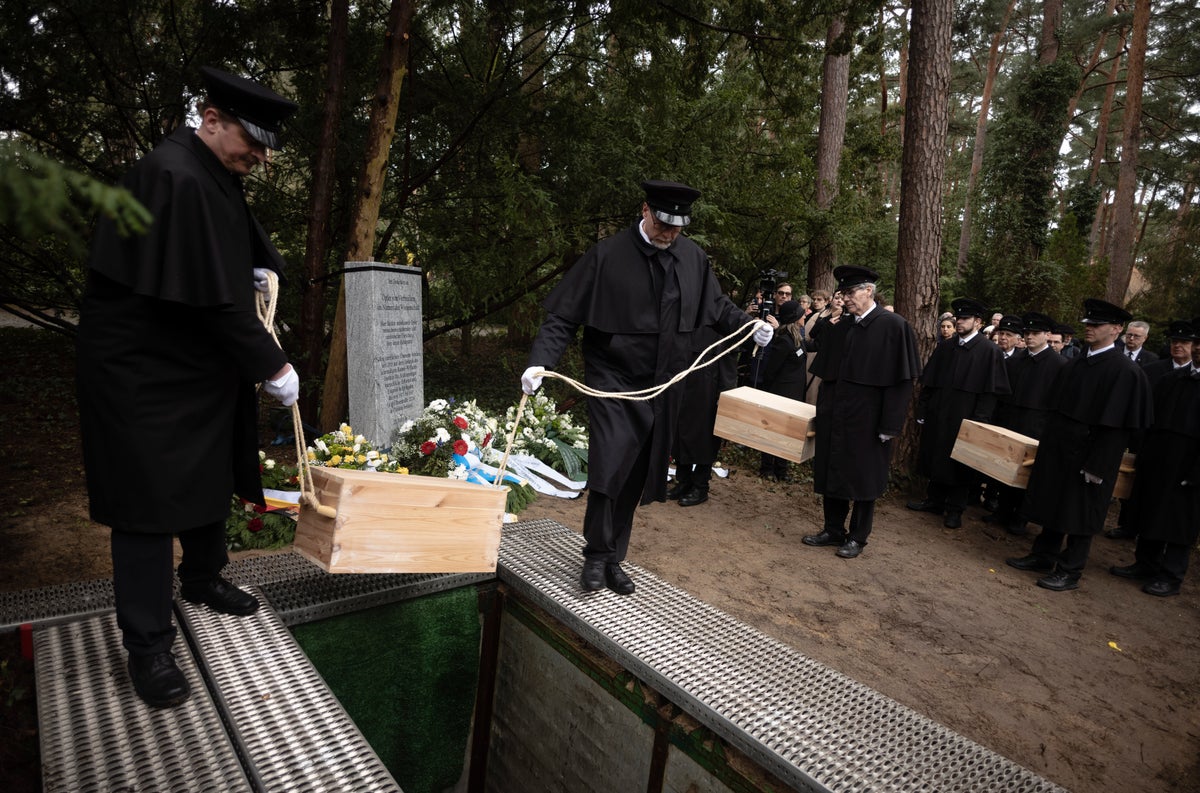
Thousands of bone fragments, which may include the remains of victims of Nazi crimes, were buried Thursday after they were found on a Berlin university campus where an institute for anthropology and eugenics was once located.
Some 16,000 fragments were found on the campus of the Free University in excavations that started in 2015 after human and animal bones were discovered during restoration work. The site was once home to the Kaiser Wilhelm Institute of Anthropology, Human Heredity and Eugenics, which operated from 1927 until 1945.
The university said that the recovered fragments are from “victims of crime contexts," including colonial-era killings, and some could belong to the victims of Nazi crimes. Researchers determined that the bones belonged to people of all age groups, male and female.
But the university said that, following non-invasive examinations of the fragments and historical research. it wasn't possible to identify individual victims or to link the finds to specific colonized regions or to “clear Nazi contexts.”
Organizations representing groups that may have been among those the bones belonged to — including Jews, Sinti, Roma and people with physical and mental disabilities killed by the Nazis, as well as the Herero people of Namibia, many of whom were killed in a colonial-era massacre — agreed that further research shouldn't be carried out. They said the bones should be buried “without religious appropriation or eurocentric symbolism,” the university said.
The public burial with about 230 guests took place Thursday at the Waldfriedhof cemetery in the Berlin suburb of Dahlem, near the site where the remains were found. Five simple caskets were lowered into the ground by pallbearers.
“The inhuman practice of research racism foresaw no burial for the remains and threw them in pits,” said Daniel Botmann, a representative of Germany's Central Council of Jews, German news agency dpa reported. “Today we are taking numerous lives whose voices and biographies were extinguished to their last resting place.”
The head of the Free University, Günter Ziegler, said that “a specification of the victims by groups would ultimately only reproduce the racist methods and ideologies of the past.”
“That also means that we can no longer assign any name or face to the victims,” he added. “But we can remember them.”







